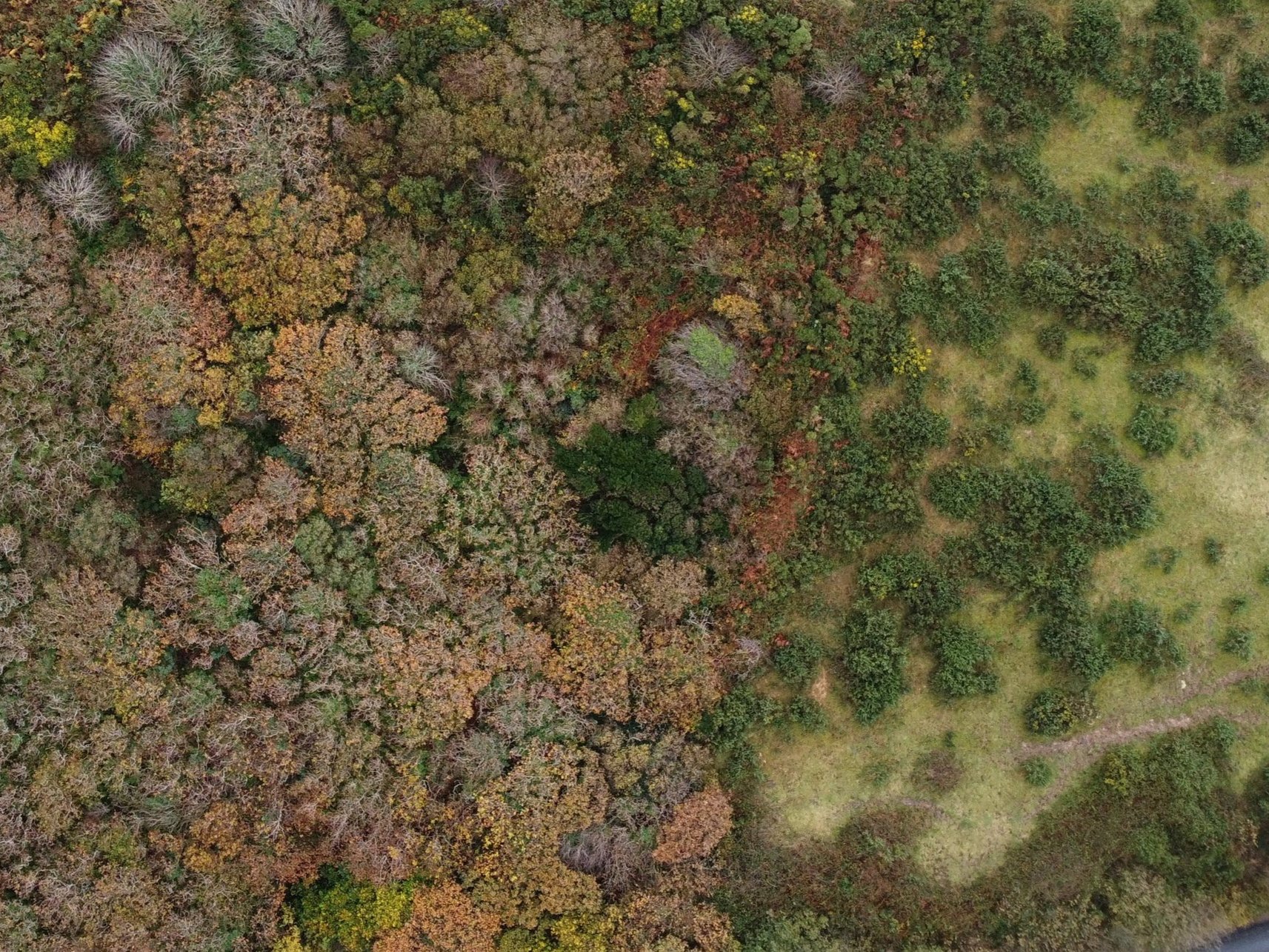What a Real Native Woodland Scheme Might Look Like
Farmers and rural kids know of these old woodlands dotted throughout the countryside.
Originally published in Irish Farmers Journal, 13th March, 2024.
Ray Ó Foghlú, Hometree’s Development Lead, reflects what a real native woodland scheme might look like. Whilst the 2023-2027 Forestry Programme comes with a new emphasis on native species, a meaningful commitment to our last remaining native woodlands is missing.
Ireland’s total forest cover is around 12%, but our true native woodlands are thought to be as low as 1.5%. Although they occupy a small area, they are quite evenly distributed, showing up in most parishes, or even townlands, clinging on in river valleys, rocky outcrops, and in wet places.
Sadly, most are now in a sorry state; overgrazed by livestock and deer, or choked up with invasive species. The last Habitats Directive report submitted to the EU in 2019 stated that three of the four woodland types assessed were found to have bad conservation status, all accompanied with declining status trends.
Trees alone do not make a forest
The various native trees schemes contained in the current programme are almost entirely focused on tree planting. A walk through a maturing native plantation is illuminating. Whilst it may look like a forest with trees such as alder, or birch or oak, the ground flora tells a different story. Plants such as buttercups, or docks speak to a long history under agriculture.
Our old woodlands on the other hand (even the small ones) tend to have rich assemblages of forest biodiversity. Flowers such as wood anemone or bluebell, and lichens such as lungwort are woodland specialists. They can’t live without trees and don’t recolonise new forests quickly, and so tell us of the longstanding and continuous presence of the habitat. They also hint at the presence of a whole range of less visible ecology.
Along with cartographic records these indicator species can help us identify the woodlands which are worth protecting.
A very common occurrence. Clearance of natural regeneration on the edge of an ancient woodland because the landowner has little incentive to allow it to grow.
What is required?
The most important thing we can give these old woodlands is space to expand naturally. In most instances this means removing or radically reducing grazing pressure. With livestock, this can be achieved through fencing or increasingly with GPS collars. In the case of deer, through culling.
To put this approach on a policy footing we must first have a clear understanding of where the woods are. Whilst we can make a start using the Provisional Inventory of Native Woodlands completed in 2008, it is by nature provisional and misses many of them, particularly the smaller ones. We need higher quality data.
There is good news on this front, as Dr John Devaney and a team of researchers at Maynooth University, Teagasc, and DKIT are just beginning work on the Complete Inventory of Native Woodlands in Ireland, thanks to funding from DAFM and NPWS. This is a very exciting project which will be deploying five dedicated researchers (two PhDs and three post-doctoral researchers) in areas such as remote sensing, machine learning and AI, cartography, and paleoecology.
Incentivising woodland improvement and expansion
The data collected could be deployed in many interesting ways to the benefit of the woodlands and their owners. One idea I have been toying with is the concept of map-based incentive zones on the perimeter of the old woodlands which reward owners who allow them to naturally expand.
I imagine this could operate on a results-based basis, to avoid incentivising abandonment. For example, woodlands with unaddressed cherry laurel or rhododendron infestations would receive a lower score/payment. Those with beneficial features such standing deadwood would recieve a higher one. Additionally, the system should be able to exclude areas on the edges of the woodland where tree colonisation would not be desirable, such as peatlands or species-rich grasslands.
I envisage payments would be commensurate with the Native Trees Area Scheme, so landowners would see a clear benefit in participation. Once these map zones are in place farm advisors and foresters could make landowners aware that they have something unique on their hands and could benefit from being a good custodian of it.
Planted native woodlands will remain important, but for our old woodlands, expansion natural regeneration is the best solution.
Who should administer it?
How such a scheme could be delivered is an important consideration. The Forest Service has shown itself to be low on ambition and delivery when it comes to native woodland conservation. Perhaps the NPWS is a better home, with the scheme administered through its Farm Plans. Maybe it's even through more traditional agri-environmental scheme routes, like ACRES. These woods, after all should not be siloed from the farm system, as they often have been. In fact, their ability to expand may well be aided by a well-timed grazing event, one which breaks up the grass thatch and allows light seeds of birch or willow to connect with the soil.
How should it be funded?
Whilst the new forestry programme is very well resourced, the targets mentioned in relation to native woodland conservation (290Ha/year) are wholly inadequate.
The Nature Restoration Law could be the key to unlocking new funding streams in this space. The NRL mandates member states to implement restoration measures to enhance biodiversity of forest ecosystems. Through the recently announced three-billion-euro National Climate and Nature Fund there is an opportunity to create a fund to specifically address issues such as the ones outlined above. Minister Malcolm Noonan is on the record as saying the plans required to make this happen can only be created with input from key stakeholders.
I hope the thus far resistant farm organisations are starting to see there is real opportunity for their member in nature restoration and get onboard.




